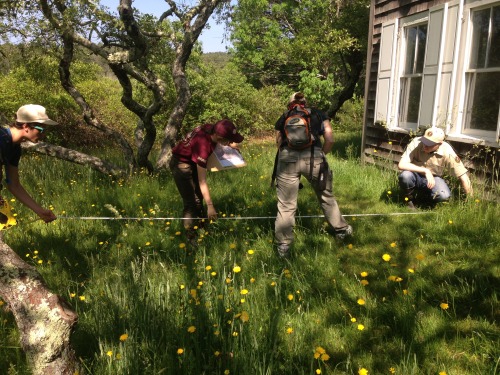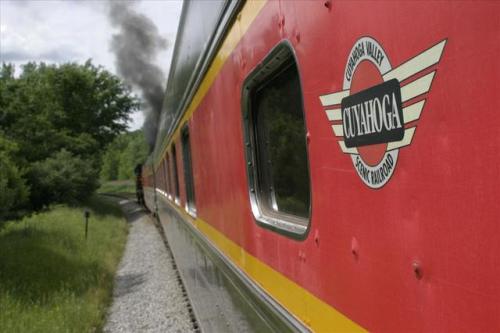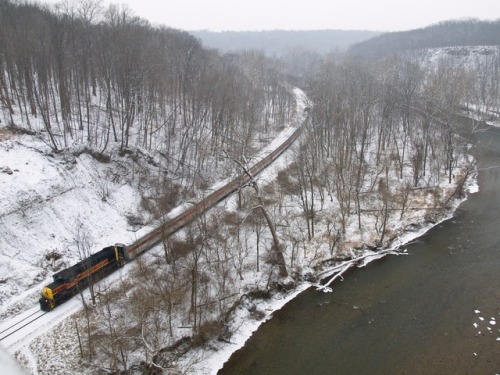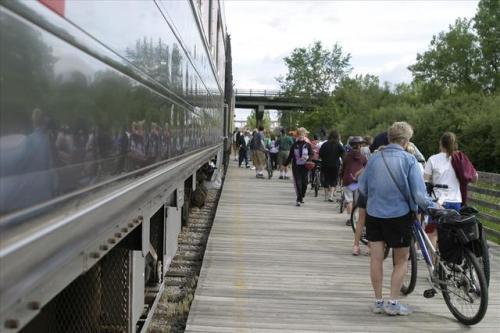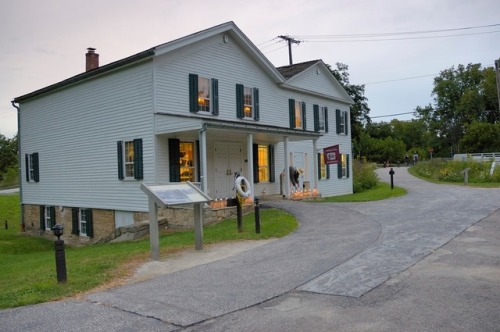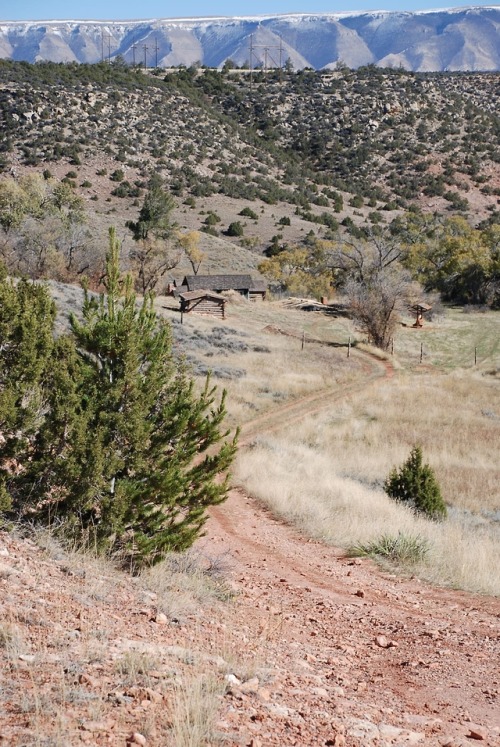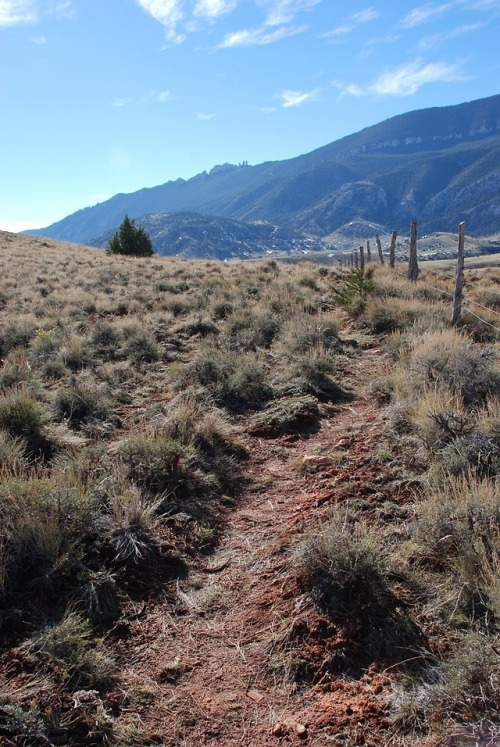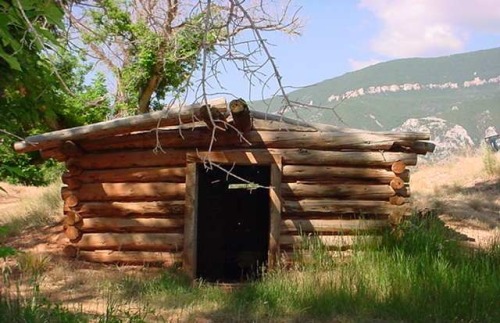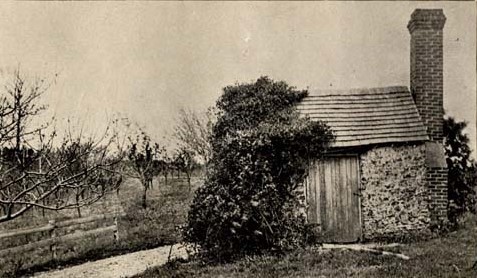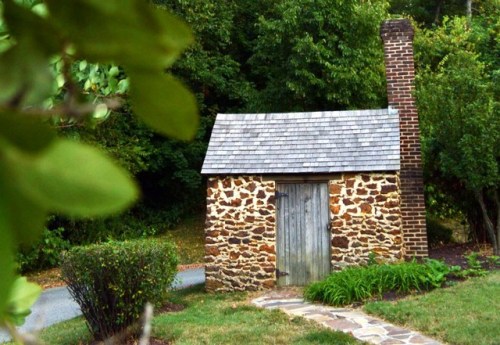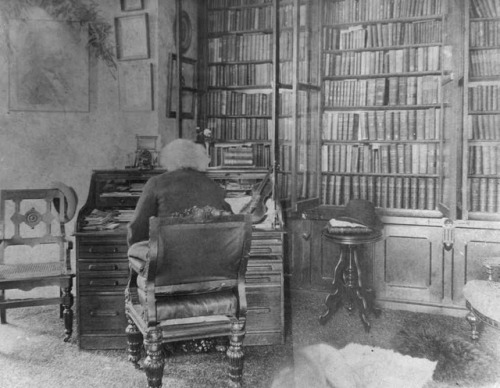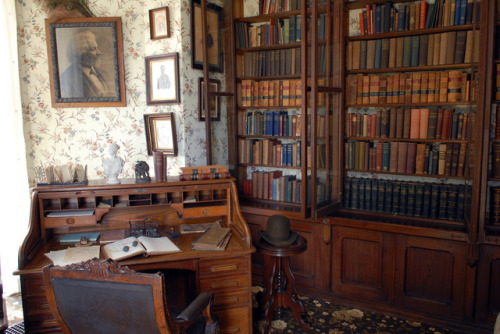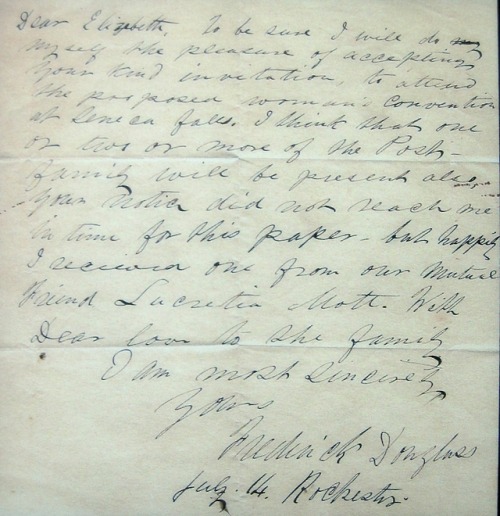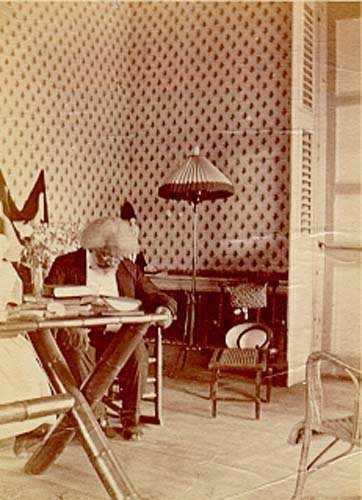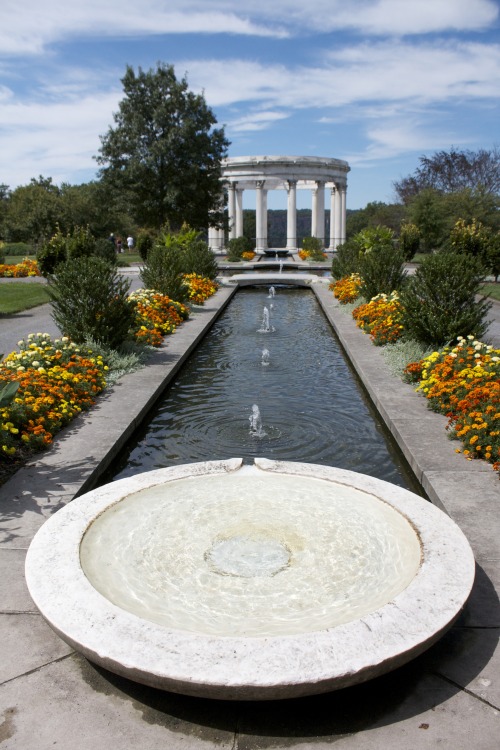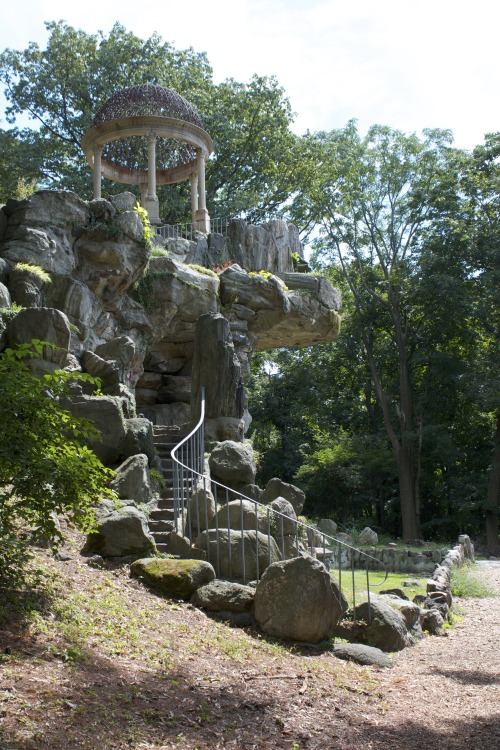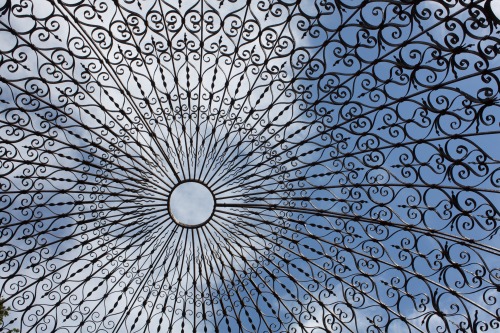#preservation
Internship Opportunity!
Join the Olmsted Center for Landscape Preservation team this winter (remotely) as a Geographical Information Systems/App Development Intern to help build a web-based mobile app for tree assessment to improve management in the National Park Service.
This individual will build and beta-test a web-based mobile app for tree inventory and condition assessment which will allow for integration of data collection with the arboricultural field manual. They will support and participate in the collection of field data using GIS and develop GIS data structures to capture information through the ESRI Collector. The 1200-hour position is supported through a partnership with the National Council of Preservation Education.
If you have interest and experience in cultural resource management and GIS, check out the full posting and apply through the Handshake job portal (position #4160631) or at PreserveNet.
Details
- Direct link to the position announcement: Geographical Information Systems/App Development Intern
- Find more about the Olmsted Center for Landscape Preservation: OCLP Internships
- What does an internship with the Olmsted Center look like? Don’t miss the Designing the Parks blog for notes from the field.
- *Closes November 11, 2020*
Post link
Internship Opportunities
Interns, called Associates, are integral to the Olmsted Center for Landscape Preservation team and work under the mentorship of experienced landscape architects, horticulturalists, and planners. Associates engage in an extensive program of trainings, educational opportunities, and field trips to enrich their experience.
Want a closer look? Don’t miss the Designing the Parks internship blog.
These paid internships vary in duration and focus but are typically offered to graduating students and young professionals in landscape architecture, horticulture, historic preservation, history, GIS, or related fields, who seek professional experience in cultural landscape preservation.
These positions are supported through a partnership with the National Council of Preservation Education. For more information about each position, including desired qualifications, compensation and project details, download the full announcements at the link above.
Please send application materials by March 1, 2020.
Post link
The Valley Railway
Cuyahoga Valley National Park, Ohio
By the 1850s, railroads began to replace canals and riverboats as a more efficient transportation option. The Cuyahoga Valley Railway served as the primary rail transportation for the Valley from 1871 to 1915, and the railway evolved into a part of everyday life for residents throughout Ohio’s Cuyahoga Valley.
Along the Valley Railway, new structures were built to accommodate the goods and people moving along the route. Bridges allowed the railroad to cross the ever changing topography. Mills which soon grew into company towns were constructed along the expanding route, as farmers embraced the railroad to ship their products to markets in Cleveland or Akron.
The ultimate end of the Valley Railway’s existence came in 1915 when the B&O assumed complete ownership of what had by that time been renamed as the Cleveland, Terminal and Valley Railroad. Five years later, in 1920, rail companies nationwide were forced to examine their role with the realization that there were cheaper and more efficient modes of transportation capable of carrying loads of coal, heavy ores, passengers and a wide variety of materials via the use of semi-trucks and more powerful locomotives. Because the region – and the nation – was now experiencing the positive commercial effects of alternative shipping methods, heavy reliance on rail service in the Cuyahoga Valley declined.
When interest in the line was renewed as a scenic excursion route in the early 1970s, the Cuyahoga Valley Preservation and Scenic Railway Association was formed. Originally known as the Cuyahoga Valley Line, the scenic railroad now operates as Cuyahoga Valley Scenic Railroad. Although it’s just one part of the transportation history of this area, the vital role of the Valley Railway can still be seen across the landscape at Cuyahoga Valley National Park.
Read the full article at nps.gov: Find more about the transportation history of this area, the development and decline of the Valley Railway, and the features of the cultural landscape: Cuyahoga Valley Railway Cultural Landscape
Thanks to Historian Larry Johnson for contributing this article!
Post link
Links to the Past: Public Golf Courses of Washington, D.C.
The three National Park Service golf courses in Washington, D.C. have a fascinating and complex history. Initially built between 1918 and 1939, the courses have hosted numerous tournaments, presidents of the United States, renowned American golfers, and countless local citizens.
The golf courses also played a role in the civil rights movement. Activists successfully protested for equal access to the courses and helped inspire the integration of the city’s recreational facilities in 1941.
TheNPS has completed studies on the history and design of the three golf courses (East Potomac Golf Course, Langston Golf Course, and Rock Creek Golf Course), including treatment guidelines for the long-term stewardship of the courses.
Now, a long-term lease opportunity is available for the golf courses, and the NPS is in search of an operator who’s committed to providing affordable and easy-to-access golfing, to improving facilities and courses, and to preserving the unique histories and landscapes of each of these courses.
For information about developing and submitting a proposal:
- News release: “Hole-in-one business opportunity with the National Park Service”
- Request for Proposals (RFP)
- Proposals must be received by the NPS by 4pm EST on November 27, 2019.

Langston Golf Course, first opened in 1939, is one of three 18-hole golf courses on National Park Service land in Washington, D.C. (NPS).
Post link
Caroline Lockhart: Author, Newspaper Publisher, Investigative Reporter, Rancher
Caroline Lockhart began her career as a journalist at the age of 18. In 1889, she became a reporter on the Boston Post. She quickly became known for her adventuresome, independent spirit, pursuing tough assignments as she developed one of her literary principles: “…I have endeavored to know what I am writing about before I write.”
Later, traveling on assignment for a story about the Blackfeet Indians, Lockhart found Cody, Wyoming and the surroundings to be to her liking. It was also a useful backdrop and inspiration for her books, often focused on western themes and characters.
The Lockhart Ranch
In 1926, she purchased a ranch in Montana, located in what is today Bighorn Canyon National Recreation Area. She inherited a two-room cabin, a few run-down sheds, and 20 acres of cultivated ground from the previous owners of the ranch. In addition to it being her residence and a retreat in which to pursue her writing, she added to the acreage and developed a sizable commercial ranching operation. She landscaped the area around the cabin with irises and hollyhocks, planted cottonwood trees for shade, and built stone pathways. She also constructed fences, corrals, irrigation systems, and additional structures.

Main ranch house at Lockhart Ranch (NPS).
Life on the ranch, which she expanded in size to over 6,034 acres, was mostly self-sufficient, as evidenced by features of the landscape. A storage building was used to keep potatoes, apples, and meats. Milk, butter, and eggs from ranch cows and chickens went from the milk shed and the chicken coop to the spring house to chill. A small apple orchard was an important part of the ranch agriculture. Maintaining equipment, repairing items, and shoeing horses made the blacksmith shop a necessity. In the corrals, livestock were branded and separated for sale.
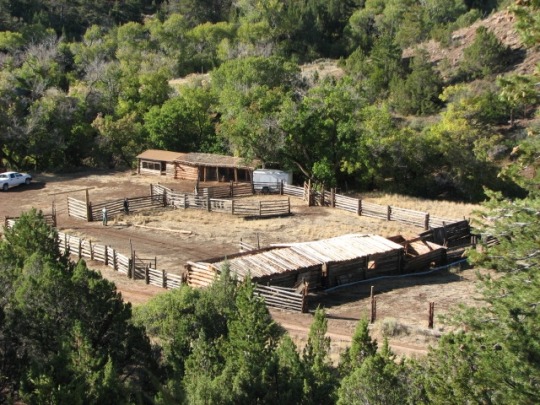
Corral at Lockhart Ranch (NPS).
Today, the ranch landscape appears much as it did when Caroline Lockhart was living there. It provides visitors with a window to the operations of a ranch in the Dryhead area during the first part of the 1900s and an introduction to the spirited woman who embraced this part of the country in both her life and her writing.

An ornamental willow gate hangs partially open, welcoming visitors to the Lockhart Ranch (NPS).
Sources and More
- Caroline Lockhart and the Caroline Lockhart Ranch, Bighorn Canyon National Recreation Area
- Caroline Lockhart Ranch: National Register of Historic Places Nomination
- Historic Ranches of Bighorn Canyon National Recreation Area
- Caroline Lockhart Ranch, Bighorn Canyon National Recreation Area (Draft, 1981)
- Images of Lockhart Ranch
- Artist-in-Residence Program at Bighorn Canyon
- More about NPS cultural landscapes
This month, we are exploring a few of the NPS cultural landscapes associated with writers and writing. Catch any you missed or add your own favorites with #literarylandscapes
Post link
Landscapes of Literature: Frederick Douglass at Cedar Hill
At the Washington, D.C. home where Frederick Douglass lived from 1877 until his death in 1895, his relationships to language and to the landscape continue to come alive.
In the home known as Cedar Hill, bookcases line several walls of thelibraryaround the heavy wooden desk where Douglass read and wrote.
What books and booklets were in Frederick Douglass’s collection? Find a list of items in the NPS collection.
A walkway from the back of the house leads to a cozy windowless retreat, where Douglass kept a second desk filled with books and paper to write, read, and quietly contemplate. He called the structure the “Growlery,” a title used by characters of several Dickens novels to describe “a retreat for times of ill humour.” In the comfortable sanctuary of his Growlery, Douglass was able to study and write in peace. Once draped in vines and surrounded by fragrant shrubs, the structure is also thought to have fulfilled Douglass’s desire to work in a natural setting.

Photograph taken in the 1930s looking south from the historic house. Frederick Douglass’s Growlery (left) and barn (right) are visible, and a clothesline stretches between two trees over the backyard (NPS / Frederick Douglass National Historic Site).
Every year, the NPS hosts an oratorical contest in the auditorium at the Frederick Douglass National Historic Site for students in grades 1-12. The goal of the contest is for students to experience the same transformative power of language that Frederick Douglass experienced as a young man.
This year’s contest will be held on December 6-7, 2019, and students from across the country are invited to apply.
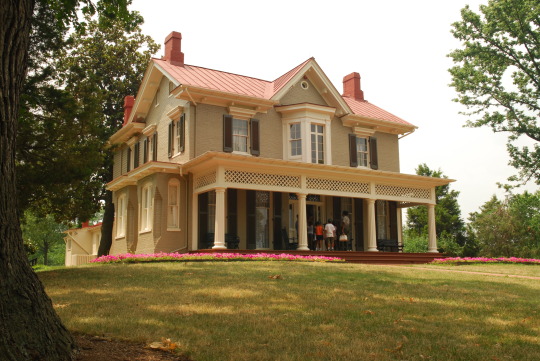
The house and surroundings of Cedar Hill, Frederick Douglass National Historic Site (NPS).
Discover More
- Frederick Douglass National Historic Site website
- Cedar Hill: Frederick Douglass’s Rustic Sanctuary
- Frederick Douglass National Historic Site Cultural Landscape Inventory
- Frederick Douglass National Historic Site Landscape Preservation Maintenance Plan
Additional image information can be found in NPGallery.
This month, we are exploring a few of the NPS cultural landscapes associated with writers and writing. Catch any you missed or add your own favorites with #literarylandscapes
Post link
Taxidermy baby duckling. There is wire threaded through the feet to help with stability. $40 PPD in the US. Visit our online shop to purchase.
Post link
Host Body was formed in August 2017 by the creators of @roadvirusbus as a way to further our interests in taxidermy, wet specimens, and other oddities and natural arts. We specialize in the creepy and gross, the occult and esoteric, and the downright beautiful. Shop coming soon.
Post link

Cemetery Cleaning day in Natchitoches, Louisiana this Saturday!
Concrete Is Beautiful
Alvar Aalto: Paimio Sanatorium. 1929
Take a seat and check out thisbook. Reading how this building has been conceived from the beggining worth it. This is Human empathy,
Indeed, it was nominated to become a UNESCO World Heritage Site.
In the link below there’s an article byEllis Woodmanrevisiting this modern architecture gem. Enjoy!
Image: Longitudinal Section. Paimio Sanatorium. Alvar Aalto.1929
Alvar Aalto’s iconic sanatorium is for sale
Aalto designed the building accurately, the concept of its architecture and interior spaces were conceived as a “medical instrument.” Given the sanatorium’s history and its subsequent functions, wishing the future new owners to preserve the iconic space.
Post link
Last week I visited the Untermyer Gardens in Yonkers. I took the Metro North and walked up quite a hill to get there, and it was worth it! The gardens have really beautiful views. It is a small property compared to the botanical gardens I have been visiting, so it didn’t take long for me to see everything, but it’s the kind of place that makes you want to stop and stay awhile, I brought a book and enjoyed reading on benches throughout the gardens. There were a handful of succulents, but overall a nice mix of different plants (marigolds were in abundance when I visited). The architecture was beautiful (the water feature in the walled garden was a favorite). Some of the garden areas feel like ruins, with columns still standing, but their former states have been lost. The gardens are located in an unusual area, surrounded by medical buildings, but stepping into the walled garden you feel like you have entered into a very special place. The grounds have a lot of potential and I hope that the idea is to preserve as well as to rebuild some of the areas to their former states. A lovely day trip.
Check out their lovely tumblr page here.
Post link
“I wish ancient people preserved their writing and artifacts better” I write in electronic signals on a piece of hardware that can’t retain its efficacy for more than a few decades.
Time to laser-print my entire blog on titanium plates and bury them underground.
brb etching my one-star yelp review of the sheet metal supplier that sold us shitty copper on a granite slab
We are never going to give this guy a fucking break are we
Ea-nasir knows what he did.
But more importantly, WE know what he did. Because it got written down in some rocks.
The funny part is that clay tablets are supposed to be ephemeral. When you’re done with them you just soak them in water, smooth them out, and re-use them for a different message. They weren’t meant to be any more permanent than an email.
The only reason we still have that particular clay tablet is because a. Ea-nasir was a huge weirdo who collected all of his hate mail, and b. his house later burned down, and coincidentally did so at exactly the right temperature to bake the collected tablets into pottery rather than destroying them.
It’s basically the equivalent of an email getting inscribed onto a steel plate by accident.
gee, wonder why his house burned down…
Before being assembled into something recognizable at a museum, most dinosaur fossils look to the casual observer like nothing more than common rocks. No one, however, would confuse the over 110 million-year-old nodosaur fossil for a stone.
The fossil, being unveiled today in Canada’s Royal Tyrrell Museum of Paleontology, is so well preserved it looks like a statue.
Even more surprising might be its accidental discovery, as unveiled in the June issue of National Geographic magazine.
On March 21, 2011, Shawn Funk was digging in Alberta’s Millennium Mine with a mechanical backhoe, when he hit “something much harder than the surrounding rock.” A closer look revealed something that looked like no rock Funk had ever seen, just “row after row of sandy brown disks, each ringed in gunmetal gray stone.”
What he had found was a 2,500-pound dinosaur fossil, which was soon shipped to the museum in Alberta, where technicians scraped extraneous rock from the fossilized bone and experts examined the specimen.

“I couldn’t believe my eyes — it was a dinosaur,” Donald Henderson, the curator of dinosaurs at the museum, told Alberta Oil. “When we first saw the pictures we were convinced we were going to see another plesiosaur (a more commonly discovered marine reptile).”
More specifically, it was the snout-to-hips portion of a nodosaur, a “member of the heavily-armored ankylosaur subgroup,” that roamed during the Cretaceous Period, according to Smithsonian. This group of heavy herbivores, which walked on four legs, likely resembled a cross between a lizard and a lion — but covered in scales.
Unlike its cousins in the ankylosaur subgroup, the nodosaur lacked a bony club at the end of its tail, instead using armor plates, thick knobs and two 20-inch spikes along its armored side for protection, according to the Smithsonian Museum of Natural History.
“These guys were like four-footed tanks,” dinosaur tracker Ray Stanford told The Washington Post in 2012.
This particular one, according to a news release, was 18 feet long and weighed around 3,000 pounds.
As Michael Greshko wrote for National Geographic, such level of preservation “is a rare as winning the lottery.” He continued:
The more I look at it, the more mind-boggling it becomes. Fossilized remnants of skin still cover the bumpy armor plates dotting the animal’s skull. Its right forefoot lies by its side, its five digits splayed upward. I can count the scales on its sole. Caleb Brown, a postdoctoral researcher at the museum, grins at my astonishment. “We don’t just have a skeleton,” he tells me later. “We have a dinosaur as it would have been.”
The reason this particular dinosaur was so well preserved is likely due to a stroke of good luck. (Well, perhaps a stroke of bad luck for the poor nodosaur.)
Researchers believe it was on a river’s edge, perhaps having a drink of water, when a flood swept it downriver.
Eventually, the land creature floated out to the sea — which the mine where it was found once was — and sank to the bottom.
There, minerals quickly “infiltrated the skin and armor and cradled its back, ensuring that the dead nodosaur would keep its true-to-life form as eons’ worth of rock piled atop it.”
That is a boon to researchers, particularly given that teeth and bone fragments are much more common finds.
“Even partially complete skeletons remain elusive,” Smithsonian reported.
Sican Culture surgeon found in funerary bundle
“…the bundle was finally excavated in late 2021, revealing an individual from the Middle Sican period around AD 900-1050. Based on the type of good associated within the bundle, the researchers suggest that the individual likely served as a surgeon.”


